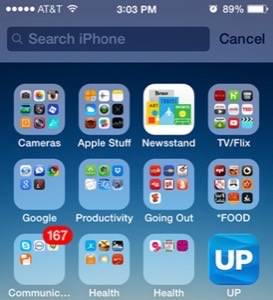Apple had a choice earlier this year: Roll out iOS 7 to every iPhone, iPad and iPod that could possibly support it or only allow the latest version of operating system for new devices. It was a Catch-22 where Apple was damned if it didn’t … and has been damned that it did.
Apple’s iOS 7 is the biggest leap that the operating system has made since it was originally released with the first iPhone in 2007. And we are not just talking about the paint with the pastel colors, flat design, parallax and opaque menu dropdowns. iOS 7 had 1,500 new application programming interfaces in it to go with a 64-bit ARM architecture that future-proofs iOS for the next few years.
See also: When iOS 7 Attacks: Help For iPhone 4 And 4S Owners
Yet one of iOS 7’s biggest problems has been supporting the past.
If you are running iOS 7 on an iPhone 4, iPhone 4S, iPhone 5 or an iPad 2, you are getting a double whammy of trouble. Apple, by necessity and design, crippled many features in iOS 7 to support older devices. This is mostly a function of hardware as devices like the iPhone 4, iPhone 4S and the iPad 2/3 don’t support functions like AirDrop or some of the new camera features. At the same time, older iDevices just don’t have the power to run a lot of what is happening in the background of iOS 7. And it is causing problems.
Many Apple users with devices released in 2012 or earlier have reported that iOS 7 renders their smartphones “unusable.” Apps crash, the whole system lags and is unresponsive and battery life drains extremely quickly. Reports that the iOS 7 keyboard is slow and typing the wrong words has some users throwing a fit.
Why Fragmentation Would Be Good For iOS
Apple loves to tweak its competitors at its presentations. Microsoft has for years has been the target of sideways jabs by Apple executives. Google and its Android operating system are now a frequent target. Apple fans love to point towards Android and scream “fragmentation, fragmentation!” as a sign of the inferiority of Google’s mobile operating system.

Apple could probably use a little fragmentation at this point.
As of October 18, nearly 73% of iOS users were on iOS 7. That’s about 250 million devices upgraded in exactly one month. That’s an impressive feat, but one that’s also brought its own problems.
Most users hardly have a choice to download the iOS 7 update; their iPhone or iPads do it automatically when connected to Wi-Fi. The user still has to install the update themselves, but if they don’t, it just sits on the device, taking up memory until the user eventually installs it in place of iOS 6. One man in California has even taken Apple to small claims court because he didn’t want iOS 7 on his device.
To complicate things, Apple has made it basically impossible to downgrade from iOS 7 by deactivating authorization of new iOS 6.1.3 downloads. Users with older devices are stuck with iOS 7 whether they like it or not.
Apple did the same thing for users last year when upgrading from iOS 5 to iOS 6. The rollout was not without its problems, but not quite on the scale we have seen with iOS 7.
Apple’s Catch-22
Apple has plenty of reasons to want all users on the latest version of iOS. It theoretically helps app developers create streamlined experiences and allows Apple to address any and all OS issues that arise with one update it can roll out to everybody (as it has done twice in the last month with iOS 7.0.2 and 7.0.3).
The ability to roll out an operating system upgrade to millions of people at once is a big selling point for Apple vis-à-vis its rivals. Google can’t do that, given that the Android ecosystem that involves dozens of hardware manufacturers and cellular carriers who are all part of the process.
At the same time, Apple would do well if it left some of the users on older devices out of the newest versions of iOS. Really, Apple would be doing them and itself a favor, given the performance problems that have plagued older iOS devices with the iOS 7 rollout.
But this is where Apple finds its Catch-22. Users who aren’t allowed to get the new version of iOS could be really angry. We’ve seen this over and over with Android. Yet users that do get the new version of iOS are also really angry because their devices just are not working as well as they used to.









